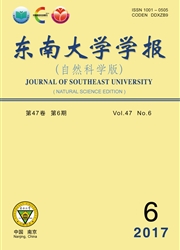

 中文摘要:
中文摘要:
为了提高抑郁症识别的准确率,将功能核磁共振成像的任务态数据和静息态数据相结合,建立基于数据驱动的模型以提取识别特征.在没有任何先验知识的条件下,采用独立成分分析法提取任务态数据和静息态数据的独立成分;然后,利用相关遍历分析法获取功能信号集,利用频谱分析法识别并获取功能信号成分;最后,将功能信号成分作为贝叶斯分类器的特征输入,完成分类.结果表明,利用该方法提取出的功能信号成分能很好地将抑郁症患者和健康者区分开,整体识别准确率达到77.27%,抑郁症患者识别准确率达到83.33%,健康者识别准确率达到70.00%.实验结果证明了这一方法的有效性及优越性.
 英文摘要:
英文摘要:
In order to improve the recognition accuracy of depression,event-related data and resting-state data in functional magnetic resonance imaging(fMRI) are collaborated and a data-driven model is modeled to extract recognition features.Without any priori knowledge,the component analysis(ICA) is adopted to extract the independent components of the event-related data and resting-state data.Then correlation analysis and spectrum analysis between independent components are used to find the components with major contributions for recognition.Finally,the functional activation related components are taken as the input features of Bayesian classifier to achieve the classification.The results show that the recognition accuracy by this method is 77.27%;the patient recognition accuracy is 83.33%;the healthy recognition accuracy is 70.00%.Thus,the functional signal components extracted can well separate the depressed from the healthy.The experimental results validate the effectiveness and the superiority of this method.
 同期刊论文项目
同期刊论文项目
 同项目期刊论文
同项目期刊论文
 期刊信息
期刊信息
